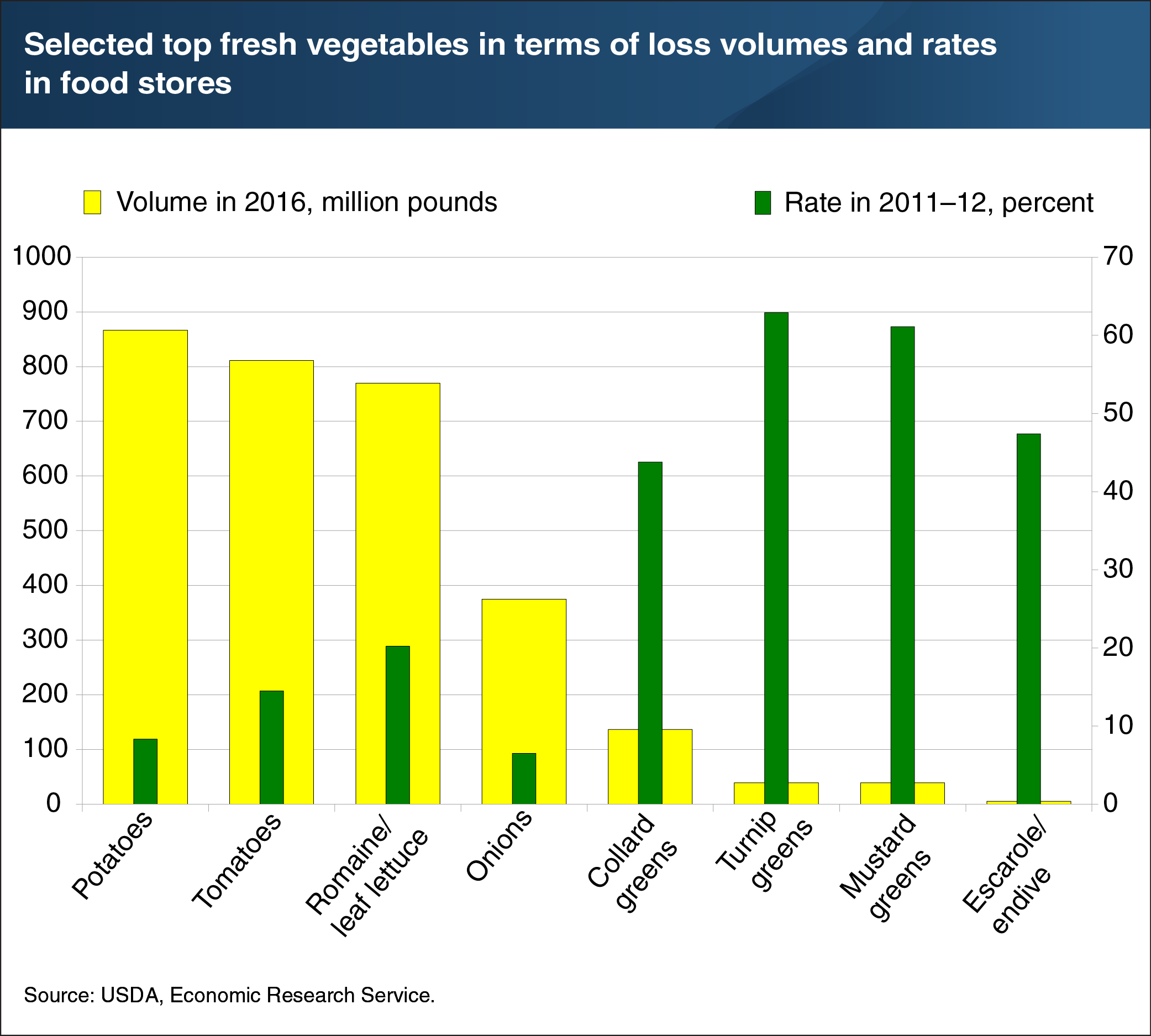Estimates of Food Loss at the Retail and Consumer Levels
What is food loss?
Food loss represents the edible amount of food, postharvest, available for human consumption but not consumed for any reason. Food loss includes:
- Loss from mold, pests, or inadequate climate control
- Cooking loss and natural shrinkage (for example, moisture loss)
- Food waste (for example, food left on a plate)
Why and where does food loss occur?
Food loss occurs for many reasons, with some types of loss—such as spoilage—occurring at every stage of the production and supply chain. Between the farm gate and retail stages, food loss can arise from problems during drying, milling, transporting, or processing that expose food to damage by insects, rodents, birds, molds, and bacteria. At the retail level, equipment malfunction (such as faulty cold storage), over-ordering, and culling of blemished produce can result in food loss. Consumers also contribute to food loss when they cook more than they need and throw out the extras. There are good economic reasons for some food loss, such as to ensure food safety.
How much food loss is there?
ERS estimates that in 2010, a total of 133 billion pounds, or 31 percent, of the 430 billion pounds of available food supply at the retail and consumer levels went uneaten, with an estimated retail value of $162 billion.
This translates into 141 trillion calories (Kcal) of food available in the U.S. food supply but not consumed in 2010. On a per capita basis, this totaled roughly 1.2 pounds of food per person per day, with a retail value of over $1.40.
For more detail, see the infographic, Estimates of Food Loss at the Retail and Consumer Levels.
Key Findings
Amounts and rates of retail food loss vary by type of fresh vegetable
Retail-level food loss occurs when grocery retailers remove dented cans, misshapen produce items, overstocked holiday foods, and spoiled foods from their shelves. Estimates of the average supermarket loss rate was 11.6 percent for 31 fresh vegetables, with the highest loss rate for turnip greens, followed by mustard greens, and escarole/endive. Estimates of foodstore loss rates for fresh produce were developed by comparing data on pounds of shipments received with pounds purchased by consumers for 2,900 U.S. supermarkets in 2011–12. ERS researchers applied these loss rates to 2016 quantities of fresh vegetables available for sale in retail stores to estimate retail level food loss.

While the loss rates for potatoes, tomatoes, and romaine and leaf lettuce are lower than turnip and mustard greens, their sales volumes are higher, accounting for 35 percent of food store fresh vegetable sales. Supermarket loss for the 31 fresh vegetables totaled 6.2 billion pounds per year in 2016, or 5 billion pounds per year after removing the weight of nonedible peels, stalks, and other parts. Losses for fresh produce and other foods also occur in homes and eating places when food spoils or is served but not eaten (plate waste). For more information see:
Food loss quantities and rates for retailers differ among fresh fruits
Food loss occurs when grocery retailers remove misshaped produce items, overstocked holiday foods, and spoiled foods from their shelves. Rates of supermarket loss for 24 fresh fruits, based on 2,900 U.S. supermarkets in 2011–12, were estimated by comparing pounds of shipments received by grocers with pounds purchased by consumers. Loss rates ranged from 4.1 percent for bananas to 43.1 percent for papayas. Greater perishability, as well as overstocking, may contribute to higher loss rates.
To estimate retail-level food loss, ERS researchers applied the 2011–12 loss rates to 2016 quantities of fresh fruits available for sale in retail stores. Pineapples had the second-highest loss rate, and apricots had the third-highest loss rate for fresh fruits. Pineapples also ranked relatively high in terms of the amount of retail loss in 2016 (719 million pounds) due to the 2.2 billion pounds of fresh pineapples available for sale in retail stores that year. Loss volumes were highest for fresh watermelon and apples, reflecting the large quantities available for sale by retailers. In 2016, supermarket loss for the 24 fresh fruits totaled 6.7 billion pounds, or 4.7 billion pounds after removing the weight of nonedible pits and peels.

For more information see:
